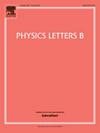Herrera complexity and shadows of spherically symmetric compact objects
IF 4.3
2区 物理与天体物理
Q1 ASTRONOMY & ASTROPHYSICS
引用次数: 0
Abstract
In this work we investigate the effect of complexity factor on the formation of photon spheres for spherically symmetric compact objects. The complexity factor obtained from the orthogonal splitting of the Riemann curvature tensor connects the geometric attributes of a compact spherically symmetric gravitating object with its matter inhomogeneity and pressure anisotropy via a scalar term. The novelty of the complexity factor is the inherent simple definition that identifies the evolution of matter tensors inside a given region of space-time. Such identification helps to obtain an equivalence class of gravitating compact objects based on their degree of complexity with zero complexity identified as the simplest system. On the other hand shadows and photon rings have become essential for identifying compact regions of space time characterised by massive gravity. Advanced observational data analysis tools augments the hope for identification of exotic gravitational objects, like the so called “black hole mimickers” and may serve as testing ground for other gravity theories. In this context we explore how complexity of compact objects (a fundamentally theoretical classification) is connected to the photon ring (an astrophysical observable in the universe) and its stability. We consider zero complexity systems and discuss its significance with respect to (wrt) formation of photon rings and hence shadows.
求助全文
约1分钟内获得全文
求助全文
来源期刊

Physics Letters B
物理-物理:综合
CiteScore
9.10
自引率
6.80%
发文量
647
审稿时长
3 months
期刊介绍:
Physics Letters B ensures the rapid publication of important new results in particle physics, nuclear physics and cosmology. Specialized editors are responsible for contributions in experimental nuclear physics, theoretical nuclear physics, experimental high-energy physics, theoretical high-energy physics, and astrophysics.
 求助内容:
求助内容: 应助结果提醒方式:
应助结果提醒方式:


